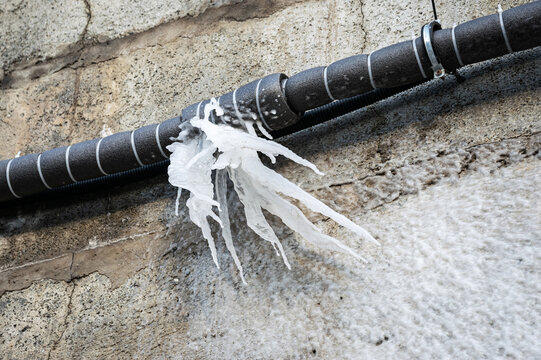Prevent Frozen Pipes in Winter: Expert Advice
Prevent Frozen Pipes in Winter: Expert Advice
Blog Article
How do you feel in regards to Prevent Frozen Pipes ?

Winter can damage your pipes, especially by freezing pipelines. Here's exactly how to avoid it from taking place and what to do if it does.
Intro
As temperature levels decline, the threat of frozen pipes rises, possibly bring about costly repair work and water damages. Understanding how to stop icy pipes is vital for home owners in cool environments.
Recognizing Icy Pipelines
What triggers pipes to ice up?
Pipes ice up when exposed to temperature levels below 32 ° F (0 ° C) for prolonged durations. As water inside the pipes ices up, it increases, putting pressure on the pipeline wall surfaces and potentially triggering them to break.
Threats and damages
Frozen pipelines can bring about supply of water disturbances, residential or commercial property damages, and costly fixings. Ruptured pipelines can flooding homes and create extensive structural damages.
Indicators of Frozen Pipes
Identifying icy pipelines early can stop them from breaking.
Exactly how to determine frozen pipes
Seek lowered water flow from faucets, uncommon odors or sounds from pipelines, and noticeable frost on revealed pipes.
Avoidance Tips
Shielding at risk pipes
Cover pipelines in insulation sleeves or use warm tape to secure them from freezing temperature levels. Focus on pipes in unheated or exterior locations of the home.
Home heating strategies
Maintain interior spaces sufficiently heated up, especially locations with pipes. Open closet doors to enable cozy air to flow around pipes under sinks.
Safeguarding Exterior Pipes
Garden hose pipes and outside taps
Detach and drain pipes yard tubes prior to winter. Install frost-proof spigots or cover outdoor faucets with insulated caps.
What to Do If Your Pipes Freeze
Immediate actions to take
If you think frozen pipes, maintain taps available to soothe stress as the ice melts. Use a hairdryer or towels soaked in warm water to thaw pipes slowly.
Long-Term Solutions
Architectural modifications
Think about rerouting pipelines far from exterior wall surfaces or unheated areas. Include additional insulation to attics, cellars, and crawl spaces.
Upgrading insulation
Purchase top quality insulation for pipes, attic rooms, and walls. Proper insulation aids preserve regular temperature levels and lowers the danger of icy pipelines.
Final thought
Preventing icy pipes calls for positive steps and quick reactions. By recognizing the reasons, signs, and safety nets, property owners can shield their plumbing throughout winter.
5 Ways to Prevent Frozen Pipes
Drain Outdoor Faucets and Disconnect Hoses
First, close the shut-off valve that controls the flow of water in the pipe to your outdoor faucet. Then, head outside to disconnect and drain your hose and open the outdoor faucet to allow the water to completely drain out of the line. Turn off the faucet when done. Finally, head back to the shut-off valve and drain the remaining water inside the pipe into a bucket or container. Additionally, if you have a home irrigation system, you should consider hiring an expert to clear the system of water each year.
Insulate Pipes
One of the best and most cost-effective methods for preventing frozen water pipes is to wrap your pipes with insulation. This is especially important for areas in your home that aren’t exposed to heat, such as an attic. We suggest using foam sleeves, which can typically be found at your local hardware store.
Keep Heat Running at 65
Your pipes are located inside your walls, and the temperature there is much colder than the rest of the house. To prevent your pipes from freezing, The Insurance Information Institute suggests that you keep your home heated to at least 65 degrees, even when traveling. You may want to invest in smart devices that can keep an eye on the temperature in your home while you’re away.
Leave Water Dripping
Moving water — even a small trickle — can prevent ice from forming inside your pipes. When freezing temps are imminent, start a drip of water from all faucets that serve exposed pipes. Leaving a few faucets running will also help relieve pressure inside the pipes and help prevent a rupture if the water inside freezes.
Open Cupboard Doors
Warm your kitchen and bathroom pipes by opening cupboards and vanities. You should also leave your interior doors ajar to help warm air circulate evenly throughout your home.
:strip_icc()/snow-outdoor-faucet-pipes-4af65d1e5e904fb1aa7bf74071fe5d89.jpg)
We are very interested by Helpful Tips to Prevent Frozen Pipes this Winter and I'm hoping you enjoyed the new entry. If you please take the time to promote this blog if you enjoyed reading it. Thanks for going through it.
Or Book Technician Here Report this page